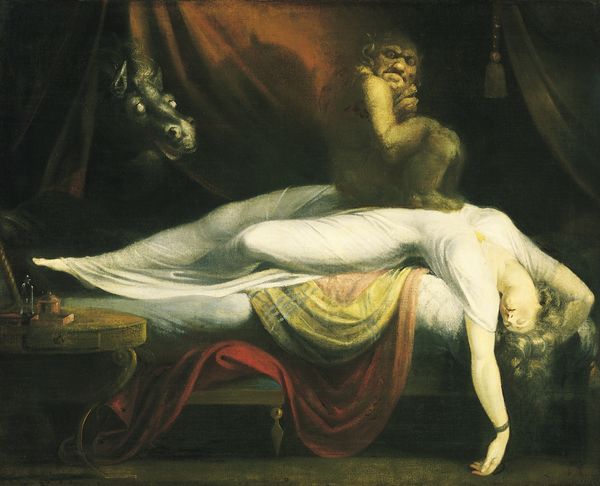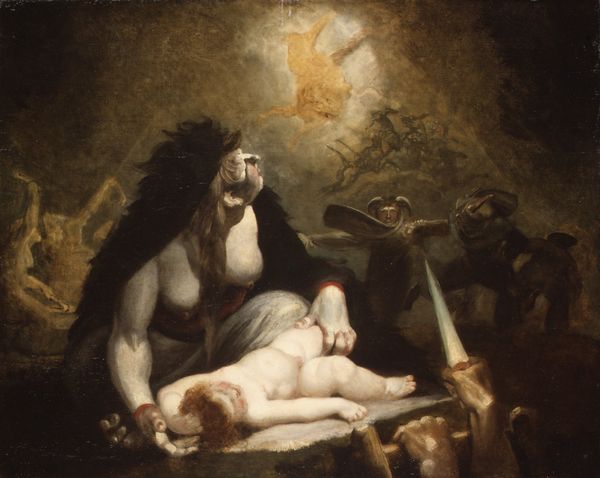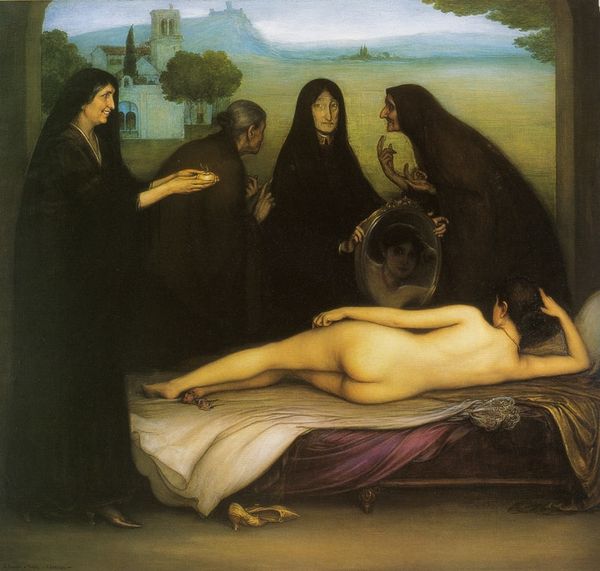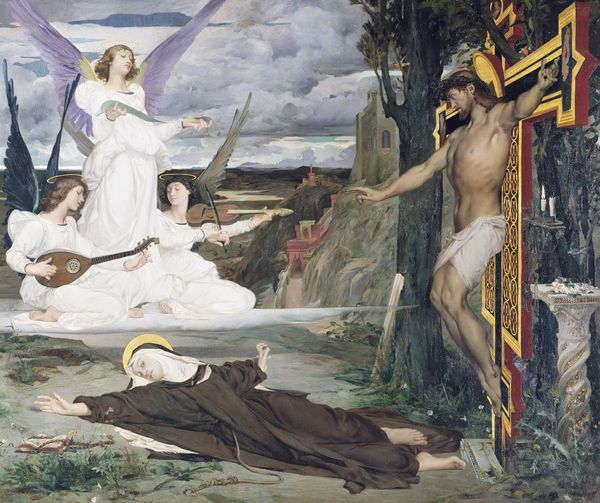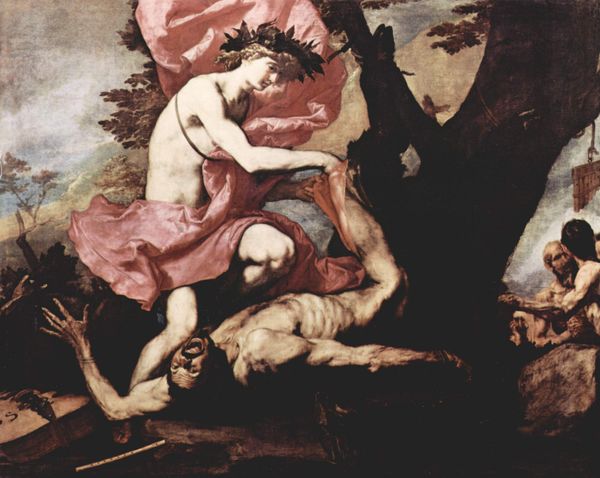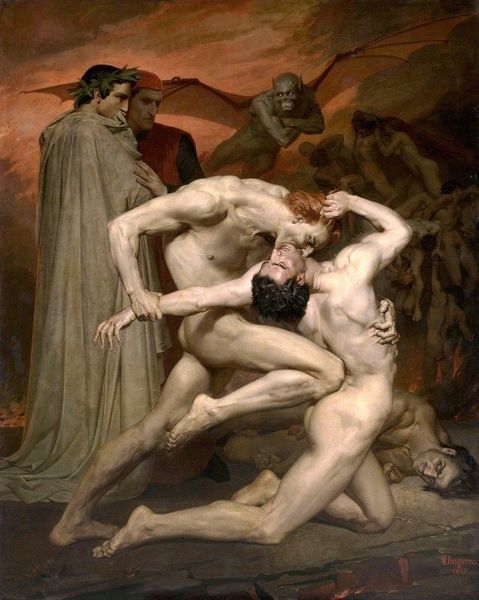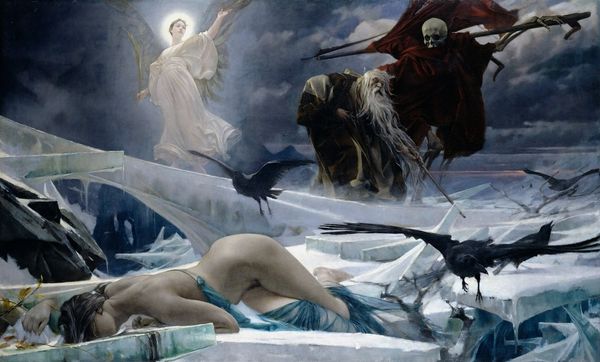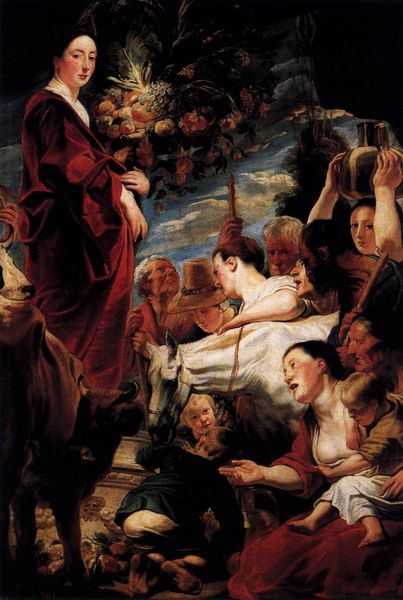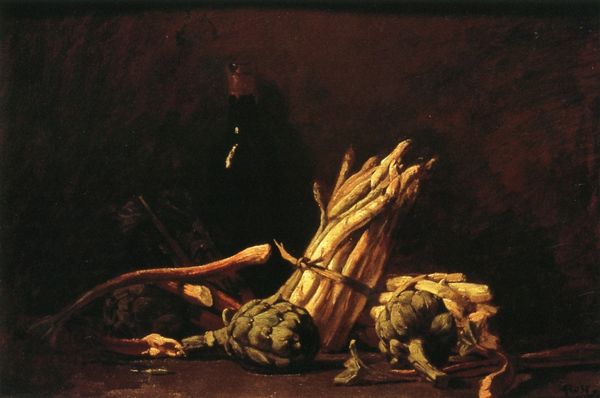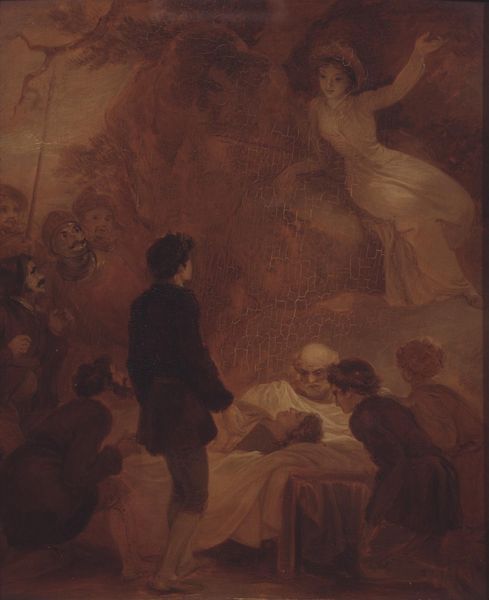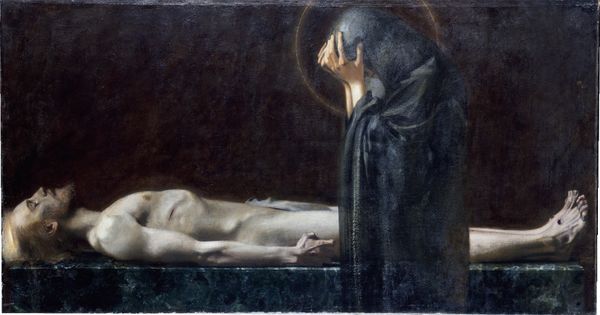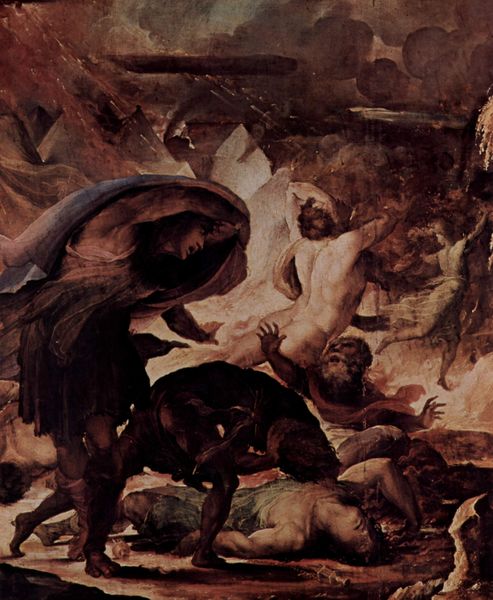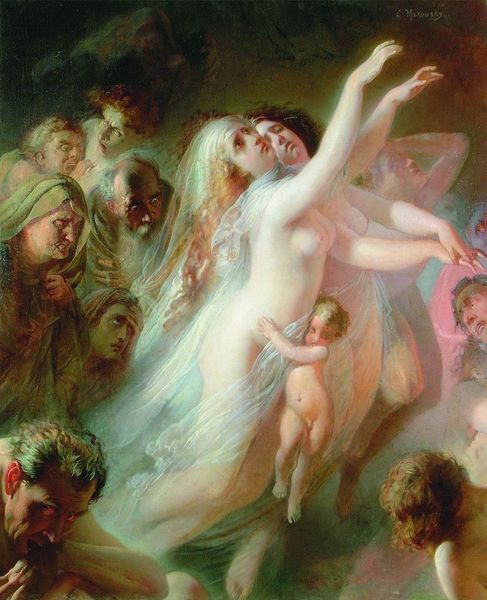
painting, oil-paint
#
portrait
#
gouache
#
acrylic
#
allegory
#
baroque
#
painting
#
oil-paint
#
figuration
#
intimism
#
genre-painting
#
history-painting
#
watercolor
Copyright: Public domain
Curator: This painting, believed to be by Francisco de Goya, is called *Saint Francis Borgia Helping a Dying Impenitent*. The medium looks to be oil on canvas. Editor: My first impression is one of intense drama—almost gothic horror. The lurid glow, the grotesque figures surrounding the dying man...it's quite disturbing. Curator: Goya created this work during a tumultuous period, rife with political and religious conflict, that very much shaped his oeuvre and personal worldview. Editor: Indeed. You can almost read this painting as a commentary on that turmoil. Francis Borgia, the saint, seems caught in a struggle for the soul of this impenitent man. But what does it tell us about death at the time? The monsters looming over the man feel… less like a moral commentary and more like fear. Curator: Exactly, I think Goya here grapples with existential anxiety that’s connected to the socio-political upheavals of his era. How do we make sense of morality and spirituality when systems around us seem to be collapsing? The "monsters," as you called them, certainly evoke societal terrors. Editor: What I find intriguing is how Goya blurs the line between the sacred and profane. The dying man doesn't appear inherently evil; instead, he's a man wrestling with mortality surrounded by a visual representation of inner turmoil. Curator: Goya wasn’t one to shy away from representing uncomfortable realities. We also must think of this through an intersectional lens as an interrogation into not just one, but several identities, the Saint, the dying, and even the grotesque monsters. Goya, known to reject popular ideas, is engaging in pushing at dominant understandings around death. Editor: That’s insightful, in terms of social history, works like this often become tools—intentional or not—to teach specific ideas around the relationship of church to citizen. Curator: Ultimately, Goya prompts us to reflect on how institutions shape our understanding of life and death. It feels incredibly relevant, even today. Editor: Indeed. Art like this forces us to confront our anxieties and, hopefully, encourages empathy for the human condition in all its messy complexity.
Comments
No comments
Be the first to comment and join the conversation on the ultimate creative platform.

